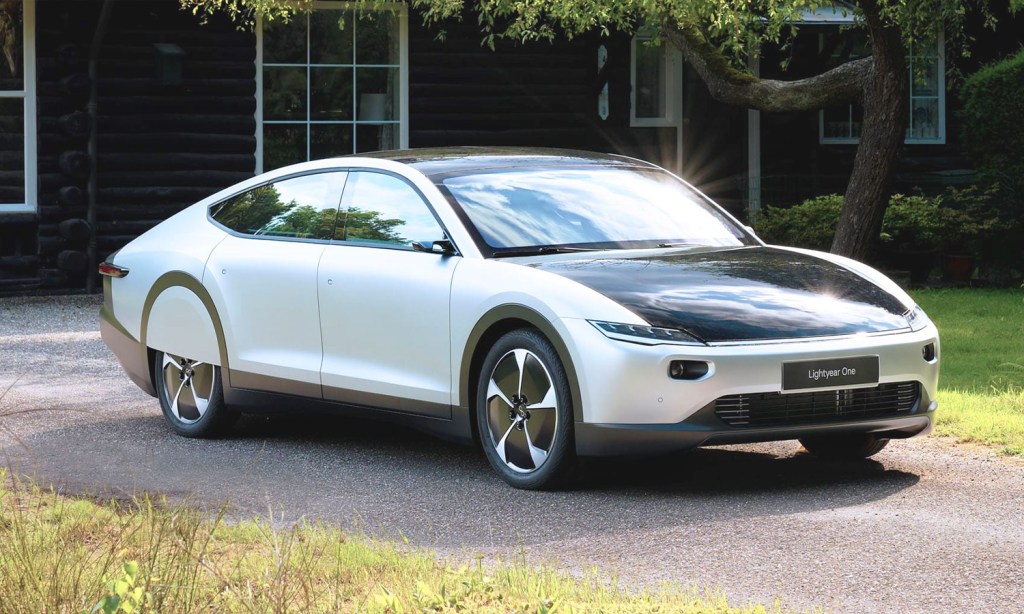Picture the scene: you’re driving along the highway, your car cruising along at the legal speed limit. You drive, and drive, and drive, for months, and you never have to stop for fuel once.
Although this might sound a bit like a horror story, the basic premise is a fast-approaching reality.
Dutch startup Lightyear has started production on its first consumer model solar car, the Lightyear 0, and has already collected 150 pre-orders, according to the company.
“Within weeks, the first solar cars will be driving on European roads to give the world its first glimpse of clean mobility,” Lightyear writes in press materials.
Electric vehicles have been a common sight on our roads for the past decade. While the government has been slow to implement the required infrastructure required to charge them on long drives, that change is slowly coming as millions are being spent across multiple states with the eventual goal of complete EV coverage of the country.
But what if we didn’t even need those charging points at all? The concept of solar cars marries up two renewable energy staples: an EV and solar panels. While you drive, or park your car anywhere outside, solar panels on the body could be charging the battery in the vehicle, essentially resulting in infinite power and unlimited range.
It’s a concept that has been around for a while now, but the Dutch company are the first to get there on a consumer level. Although their vehicle is not quite as powerful as we might like it to be, it’s still a big leap in the right direction.
Lightyear 0 is expected to be able to recharge 70kms of range per day.
“In cloudy climates, based on the average commute of around 35 kilometres per day, you can drive for up to two months before you need to think about charging. In sunnier countries, that could be up to seven months,” the company writes.
They also address the fact that charging infrastructure is a big hurdle for the adoption of EVs. That’s why their cars are designed to be charged using any simple 240-volt wall plug, which will charge the vehicle, albeit at just 32kms of range per hour.
When Might We Get Solar Cars in Australia?
Lightyear’s model 0 does not come cheap. With a price tag of €250,000, or $386,000, they’re still very far from being affordable to the general public.
This brings about the question of viability. Professor Jim Saker, president of the UK’s Institute of the Motor Industry, told The Guardian that “in reality, it’s not a commercial proposition at the moment.”
“The actual concept isn’t bad. It’s just whether the technology is actually viable to make it economically sustainable for anybody wanting to do this,” he said.
Just 1,000 vehicles will be made in the first run of Lightyear 0 cars, at a rate of just one per week at the company’s manufacturing plant in Finland. Lightyear is hoping to boost this to five cars per week by the second half of next year, but it’s still slow going.
The problem with solar cars is that the solar-panel technology has not quite yet reached a level where real efficiency can be gained from the sun on such a small surface area. But, as battery and solar technology improves, that hurdle will one day be solved.
Lightyear is already planning its Lightyear 2 model, a high-volume car with an “optimised solar roof” and the same ability to be charged from any household outlet. That car is scheduled for release in 2025 at the much friendlier price tag of €30,000, or roughly $46,000.
Australia, with its (normally) endless supply of fierce sun, ought to be the perfect location for solar vehicles and, in fact, we are home to the world’s premier solar car challenge. The Bridgestone World Solar Challenge is held every four years and sees drivers compete to race from Darwin to Adelaide in vehicles entirely powered by the sun. It’s a testing ground for concept vehicles and has 47 teams from 23 different countries competing.
In terms of commercial production, we’ve also got our own Aussie firm, Applied Electric Vehicles, in the process of developing a driverless vehicle that runs on sunlight. The Melbourne-based startup is led by two former General Motors executives and received $2 million in funding from the federal government in 2020. Earlier this year, the company partnered with Suzuki to create a fleet of vehicles they hope will be able to act as on-road delivery machines.
Lightyear is currently only taking orders for their Lightyear 0 in the EU, Switzerland, Norway and the UK at the moment, with no word yet on when the market might open up to Australia.
So, while it may be a few years yet before solar cars are a genuine reality in Australia or the rest of the world, we are inching ever closer to this exciting future.
Related: The Cheapest Electric Vehicles in Australia Right Now and How Much They Really Cost to Run
Related: Money Saving Hacks for Buying an Electric Vehicle: What Benefits You Can Get Around Australia
Read more stories from The Latch and subscribe to our email newsletter.


